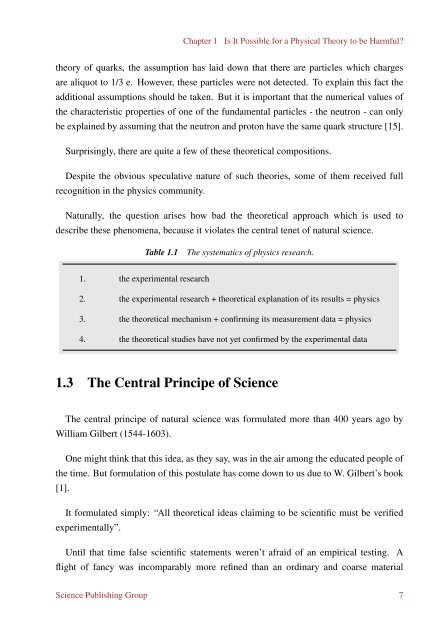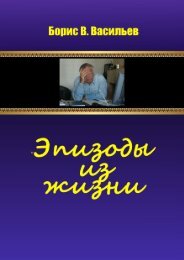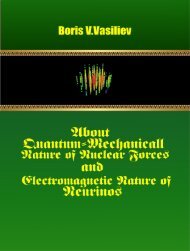978-1-940366-36-4_WholeBook
Boris V. Vasiliev Supercondustivity Superfluidity
Boris V. Vasiliev
Supercondustivity Superfluidity
You also want an ePaper? Increase the reach of your titles
YUMPU automatically turns print PDFs into web optimized ePapers that Google loves.
Chapter 1 Is It Possible for a Physical Theory to be Harmful?<br />
theory of quarks, the assumption has laid down that there are particles which charges<br />
are aliquot to 1/3 e. However, these particles were not detected. To explain this fact the<br />
additional assumptions should be taken. But it is important that the numerical values of<br />
the characteristic properties of one of the fundamental particles - the neutron - can only<br />
be explained by assuming that the neutron and proton have the same quark structure [15].<br />
Surprisingly, there are quite a few of these theoretical compositions.<br />
Despite the obvious speculative nature of such theories, some of them received full<br />
recognition in the physics community.<br />
Naturally, the question arises how bad the theoretical approach which is used to<br />
describe these phenomena, because it violates the central tenet of natural science.<br />
Table 1.1<br />
The systematics of physics research.<br />
1. the experimental research<br />
2. the experimental research + theoretical explanation of its results = physics<br />
3. the theoretical mechanism + confirming its measurement data = physics<br />
4. the theoretical studies have not yet confirmed by the experimental data<br />
1.3 The Central Principe of Science<br />
The central principe of natural science was formulated more than 400 years ago by<br />
William Gilbert (1544-1603).<br />
One might think that this idea, as they say, was in the air among the educated people of<br />
the time. But formulation of this postulate has come down to us due to W. Gilbert’s book<br />
[1].<br />
It formulated simply: “All theoretical ideas claiming to be scientific must be verified<br />
experimentally”.<br />
Until that time false scientific statements weren’t afraid of an empirical testing. A<br />
flight of fancy was incomparably more refined than an ordinary and coarse material<br />
Science Publishing Group 7













